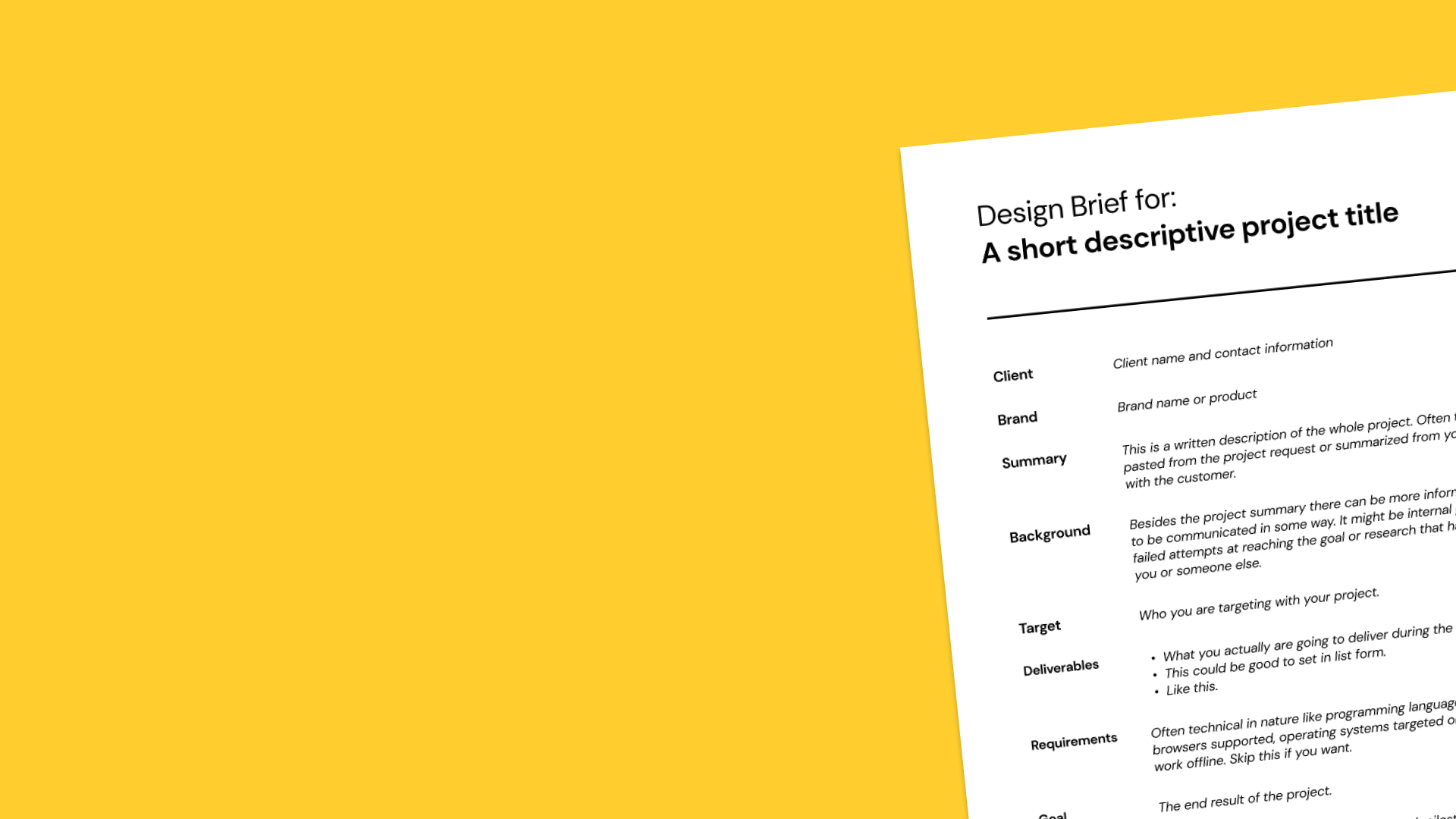How to Write a Kickass Creative Brief

Brand Design, Web Design, UX Systems – Every creative project starts with a short instructional description of the project – the creative brief.
A creative brief is a document that outlines the key details of a design project: It is the most essential tool for communicating what you need and want with your designer and ensuring that the project stays on track.
Ideally, the brief is written by the client before approaching a designer. If you’ve never done that, here are some things to include:
-
Define the project’s goals and objectives: What is the purpose of the project? Who is the target audience? What do you want to achieve with this project?
-
Identify the project’s limitations: Are there any specific constraints or limitations that need to be considered? This could include things like brand guidelines, technical requirements, or legal considerations.
-
Describe the project’s target audience: Who is the project for? What are their needs, preferences, and behaviors?
-
Define the project’s key message: What is the main message you want to convey with this project?
-
Provide any relevant background information: Is there any additional information that would be useful for the design team to know? This could include market research, competitor analysis, or examples of similar projects.
-
Include any visual references or inspiration: Do you have any specific visual references or inspiration that you would like the design team to consider? This could be anything from color palettes to typography to imagery.
-
Lastly, outline the project’s timeline and budget: How long will the project take to complete? What is the budget for the project? Are there any specific deadlines that need to be met?
By following these steps, you can create a comprehensive and effective creative brief that will guide the design process and ensure that your project stays on track. Also, check out Oskar Glauser’s Design Brief Template on Figma: https://www.figma.com/community/file/1007230768973734459
